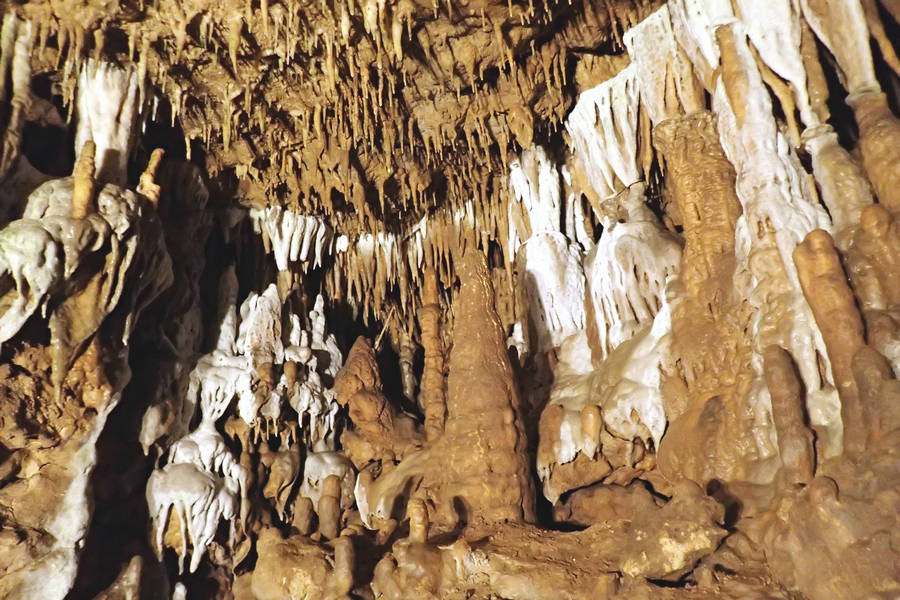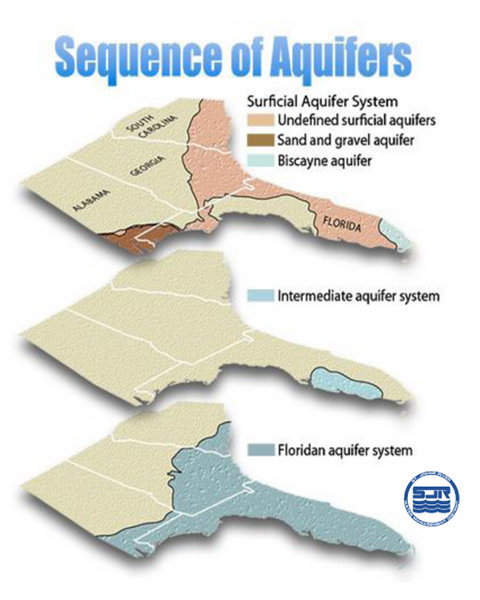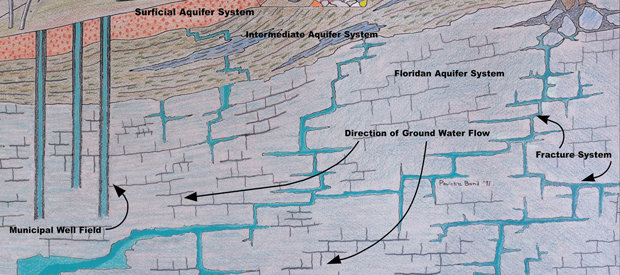What is an Aquifer?
An aquifer is a subsurface package of rocks and sediment that yields water in sufficient quantities to be economically useful to society. Aquifers are classified as either unconfined, semi-confined or confined, depending on the physical conditions under which the water is contained in an aquifer's rocks. Florida has all three types of aquifers in various combinations throughout the state.
The Floridan aquifer system (FAS), which underlies all of Florida, is the main source of potable groundwater for much of the state. However, in the extreme western Panhandle and in South Florida, the FAS is either too deep or contains water of higher salinity.
What Type of Rock are Aquifers Made of?
Water-bearing sedimentary rocks in Florida can generally be divided into two types: siliciclastics (sands, silts, clays) or carbonates (limestone and dolostone). All of these rocks, no matter how "hard" or solid they appear, contain some voids or pores, which may contain water.
Two properties that are common to all these rocks, and which control the movement of their groundwater, are porosity and permeability. Porosity and permeability are intimately related. Porosity refers to the pores themselves, while permeability is a measure of a rock's ability to allow fluids to move through its pores. For a rock to be permeable, its pores must be interconnected so that water can move freely.
To learn more about Florida rocks and minerals, visit Florida Rocks and Minerals page.
What is Hydrogeology?
Hydrogeology is the study of groundwater with emphasis given to its chemistry, modes of movement, and relation to the geologic environment. Groundwater is the largest and most readily available source of potable water in Florida. This makes the study of hydrogeology important for having safe and clean drinking water in Florida. Hydrogeology integrates geology, hydrology, chemistry, physics, mathematics, biology and engineering to understand the occurrence and movement of water in the complex subsurface environment.
To learn more about current hydrogeologic research, visit Geologic Research page.




